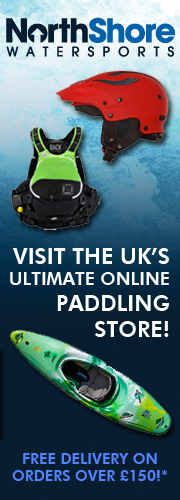To do a wave wheel you will need a boat that has slicy ends and ideally very little volume. When doing a wave wheel you don’t need any particular wave, but it is easiest if it is a green wave with no pile on top as the pile can slow you down. Wave wheels can be done in longer boats but, a longer boat needs a larger wave. Wave wheels in larger boats also look more impressive!
Whilst paddling down stream select the wave you are going to wheel. Paddle up to the wave with as much speed as possible. The faster you’re going, the more the wave will throw you and more impressive the wheel will be.
As you’re coming up the face of the wave, take one last stroke near the top of the wave. As you’re taking this last stroke, lean your boat up on the sidewall that you are most comfortable double pumping with. This is your first pump in a double pump. The more perpendicular your boat is to the wave the better. This last stroke should bring you to the top of the wave. Your speed should allow the bow of your boat to be slightly out of the water. Quickly turn that forward stroke into the second pump in a double pump. Then use the backside of your paddle to slam the bow of your boat into the backside of the wave. The wave is used to help you with your first pump to raise the bow high in the air so that it is easier to slam the bow with the second pump. Extend that last stroke down into the water until you have stood your boat up vertically in the first point.
Wave wheels can be thrown in the surf as well, same procedure just usually bigger waves.


Recent Comments